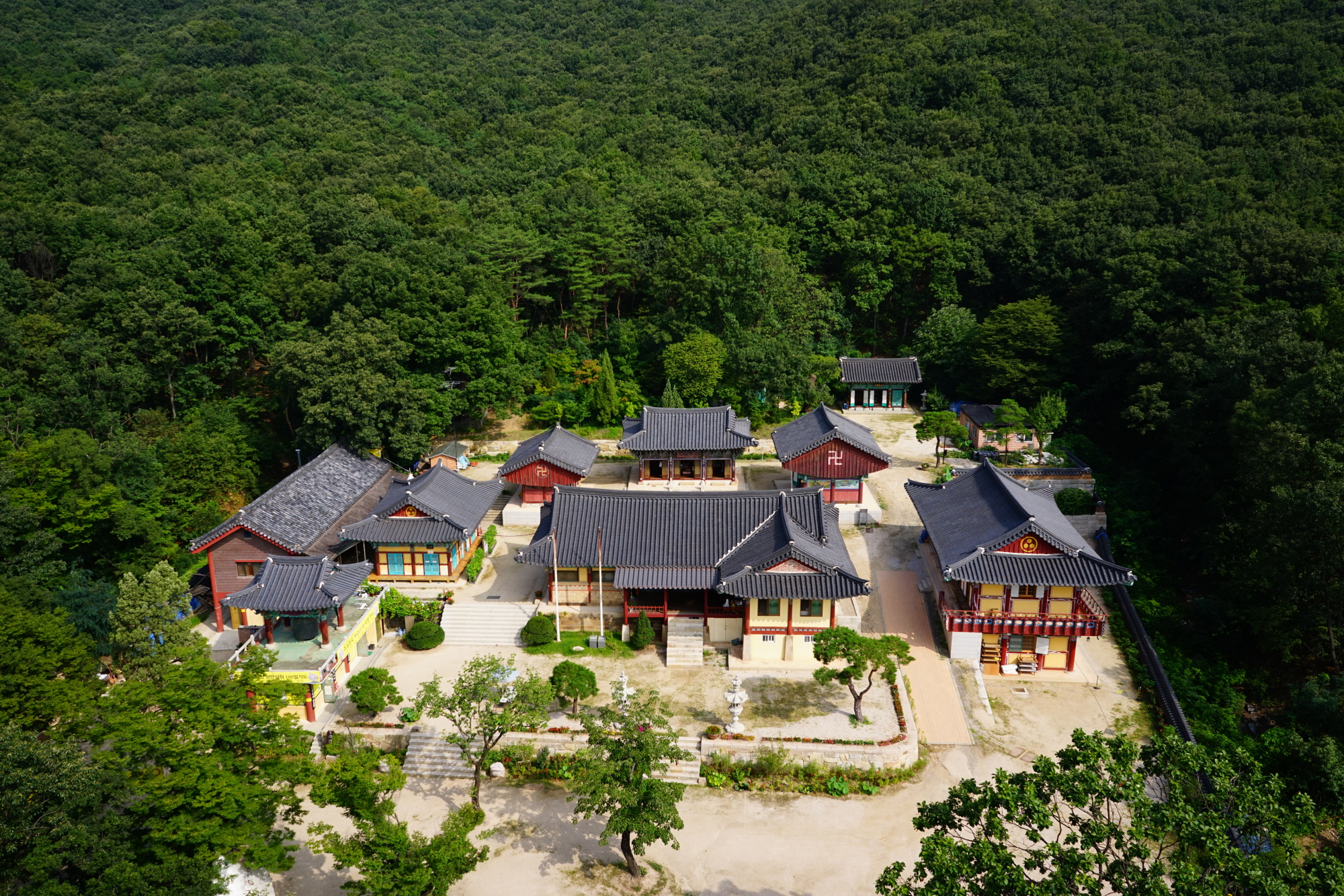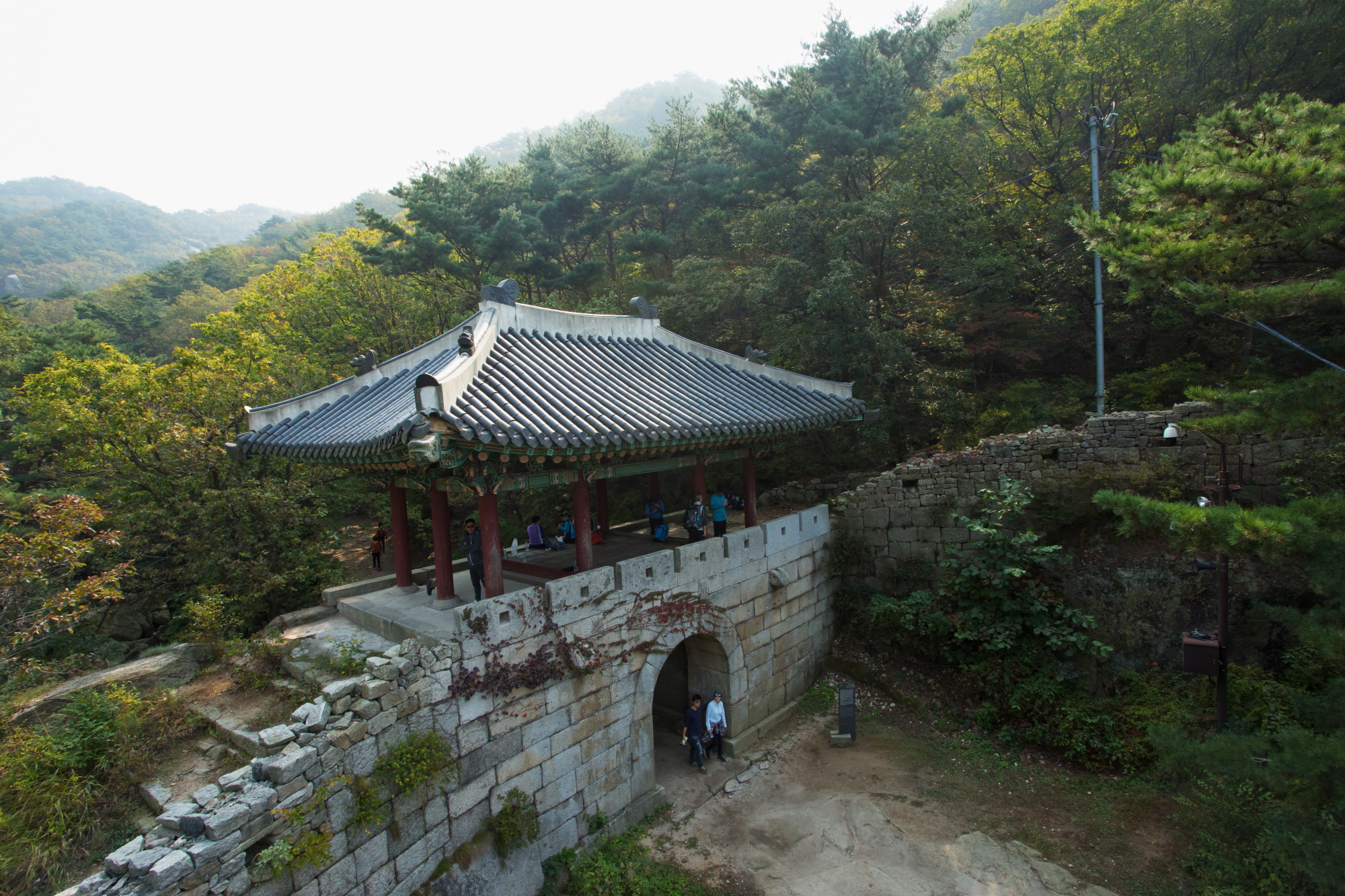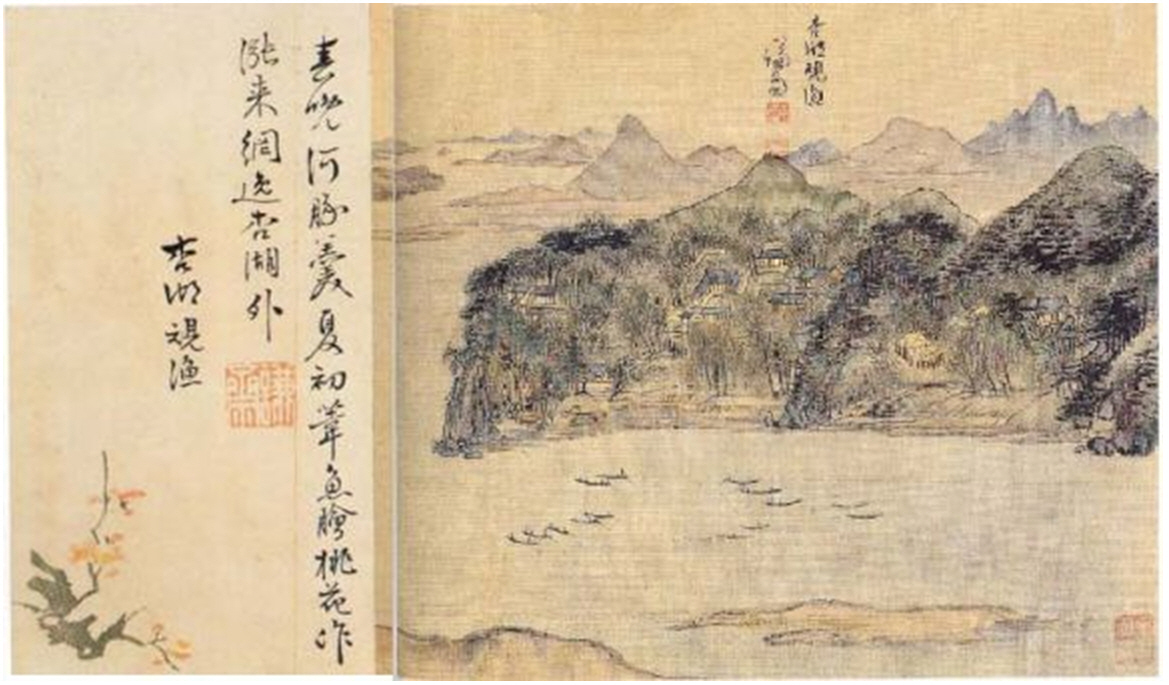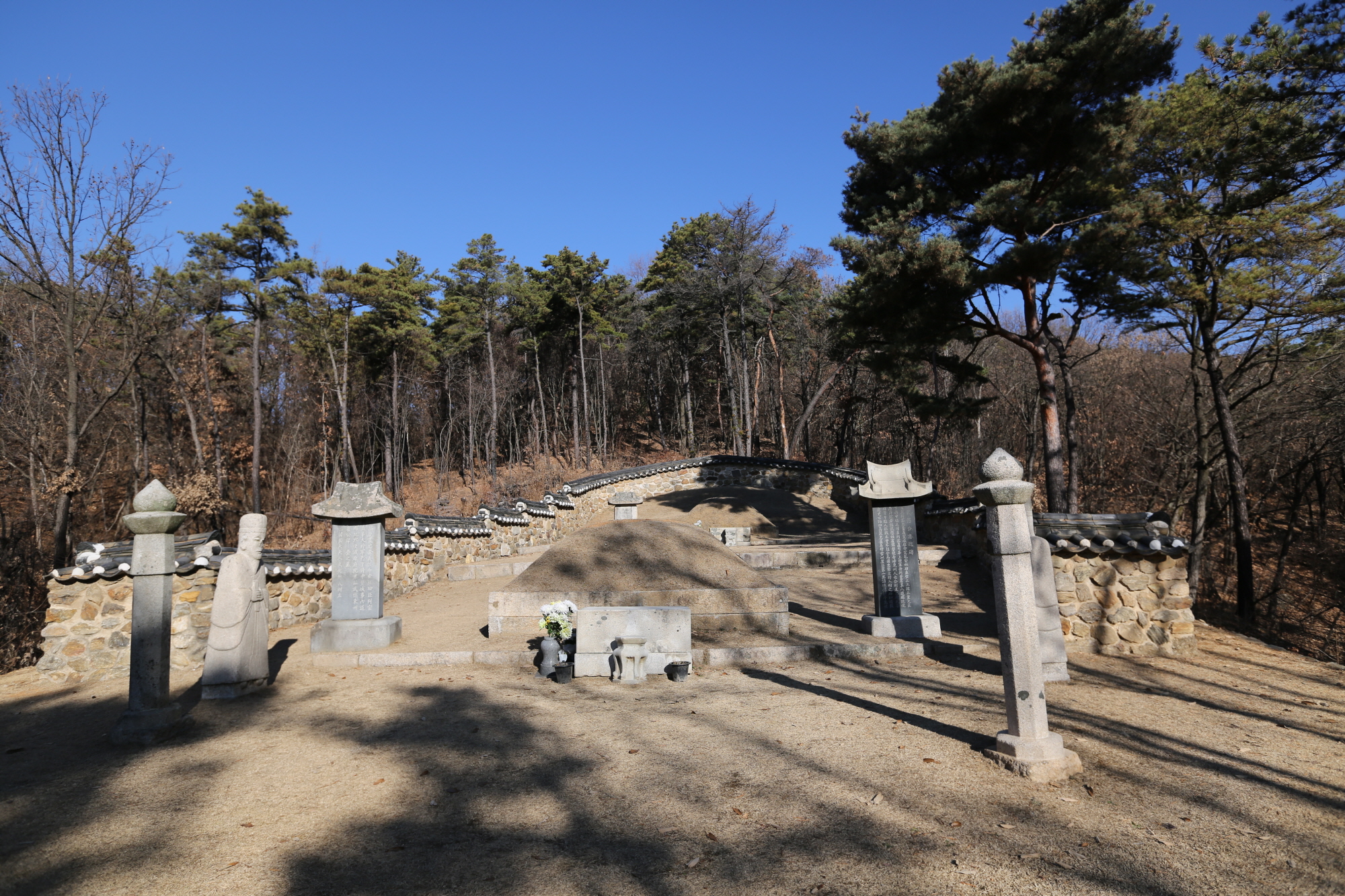
Sir Lee Chook, loyal servant of King Danjong and story of Eunmosi Village
In Donae-dong, within the jurisdiction of Heungdo-dong, Deogyang-gu, Goyang-si, there is a natural village called Eunmosi.
In Eunmosi Village, the Lee family of Hansan has been living in groups and there are tens of tombs behind the village.
Three tombs have been designated as Goyang Regional Cultural Assets and are well-taken care of by their descendants.
To the direction Seongsa-dong Ganggogae of the tombs is a very old pond.
It is a pond famous enough to have been recorded in the Goyang-gun map of the late Joseon Dynasty.
The person who made the tomb is Mangwolam, Sir Lee Chook, the loyal servant of King Danjong or early Joseon period. Sir Lee is originally from Hansan.
He is the grandson of Sir Moguen Lee-saek, the Confucian scholar that represents the latter period of Goryeo, he rose to the position of governor of Hwanghae-do.
When King Sejo abdicated King Danjong and exiled him to Yeolwon, Gangwon, Chook abandoned his government post and retired to Goyang.
He built a small house and called it Mangwoldang, meaning watching Yeolwong- where the King stays, and changed his nickname to Mangwolam.
Hidden quietly, he dug a pond in 1456 and called it eunji.
The 8,250㎡ Eunji Pond still remains.
There are various aquatic plants such as lotus that grew near the pond area.
Sir Lee Chook passed away and was buried near the Eunji Pond.
Future generations heard of his servitude and the Eunji Pond story from his descendants and historians.
As he dug a pond in secrecy, the village name also became Eunmosi. Currently, Sir Lee Chook and the Eunmosi Pond are designated as the 36th Goyang Regional Cultural Asset.

Chungwon Park, the loyal servant who found and buried the body of King Danjong
Neunggol (near Wongneung Station) Village, Jugyo-dong, Deokgyang-gu of Goyang City has mountains of tens of thousands of pyeong and the family gravesite of the Park Family of Miryang.
The village is called Neunggol because the tombs of the Park family look like royal tombs when seen from the Baedari Village, where the current City Hall is located.
Among the tombs of the Park family that has been constructed since the Goryeo period, the only tomb designated as the Goyang Regional Cultural Asset is the tomb and memorial stone of Sir Park Chungwon.
The tomb of Park, Chungwon where there are two tombs placed next to one another is twin graves for Sir Park and his wife Lady Jeonggyung of Lee family of Seongsan.
Chungwon Park (1507-1581) was a literary man from the mid-Joseon period that learned literature from Sir Kijoon of Bokjae, one of the eight great scholars of Goyang.
After passing the literary exam, he positioned in writing, doctrine, and governor of Yeongwol, after which he served as ambassador, minister, the Minister of Interior, etc.
King Danjong’s royal tomb, Jangneung, is located in Yeongwol, Gagnwondo. At the entrance of the tomb is a chungjeolbi (commemorative stone) for Sir Park Chungwon.
There is an interesting story that explains the commemorative stone.
After King Danjong died unjustly in Yeongwol, his body was not to be retrieved. His body was dumped in front of Cheongyeongpo of Yeongwolseo River (aka Jucheongang).
People feared for death and could not move his body.
After a couple of days, a village foreman named Heungdo Um came by at night to retrieve the body of Danjong and make a tomb at a location told by a deer.
After a long time, the sad history of Danjong slowly faded from the memory of the people.
But strange thing began to happen. Seven district magistrates (governor) positioned to Yeongwol, Gangwon died after months after coming to their job post.
It turns out that the spirit of a dead person was appearing at night, killing the new governors.
Government officials began rejecting the Yeongwol governor position and the Yeongwol district became devastated.
It was at this time that Chungwon Park from Goyang volunteered for the governor position of Yeongwol.
While Governor Park was sleeping, the dead spirit appeared at night.
Surpsied, Chungwon spoke with the spirit and found out that it was deceased King Danjong.
Danjong said that the Heungdo Um’s temporary tomb is abandoned in the mountain, where it’s cold and lonely. He asked Park to find to body and make an official tomb for him.
When Chungwon woke up in the morning there was a deer in the yard. He followed the deer to where the young king was buried.
Chungwon Park and other officers found the body and held a funeral for him and reported to the king to make a tomb that is size of a royal tomb, which is today’s Jangneung.
As his work has been recognized, Sir Park Chungwon’s commemorative stone stands today at the game of Jangneung, Yeongwol.
![Story of Genbi Bridge, opinion of Daejang-dong, Deogyang-gu]()
Story of Genbi Bridge, opinion of Daejang-dong, Deogyang-gu
There is a small bridge at the entrance of Daejang-dong village, Deogyang-gu, Goyang, called Genbi Bridge.
Currently it is used to cross the Daejang River, and it is built at the point of border between Todang-dong and Daejang-dong.
According to residents, the briged used to be called Gebi Bridge before.
Long time ago, a scholar drank alcohol at Haengju Port and fell deep asleep on the bank of Daejang River.
While he was sleeping, a fire broke out near the Daegok Station area and spread to the place where he was sleeping.
Then a dog that the scholar used to own wet himself and began to put off the fire on his owner.
He repeated the act of entering the river to wet himself and putting out the fire until the fire was out and he was dead.
When the scholar woke up, he was touched greatly by the dead dog who saved him.
To commemorate the act of the dead dog who save his life, he put up a memorial stone and since then the bridge was called Gyeonbi Bridge, and now it’s called Genbi Bridge. The townspeople put up a new memorial stone, which still remains.
![Story of Flower Well Park within Deogyang-gu Office]()
Story of Flower Well Park within Deogyang-gu Office
Making Hwajeong, a Flower well park, the center of Deogyang-gy, Goyang
Recently a park was made after the name of the village.
Goyang’s representative city development village is Hwajeong-dong, which means flower pond village in Korean.
Goyang city replicated the pond that existed before large-size apartment complexes were constructed according to people’s will, into flower well park at the entrance of Deogyang-gu Office.
With length of 40m of water and flower, cool water flows and people can rest in the chairs and other structures.
At the front of the pond there is an explanation on the origin of the flower well park and how the park came to be.
Before urbanization began, Hwajeong had two famous well.
There was Hwasu Village Well near the Hwasu High School area and Chan Well near the Hwajeong Station area. The stories of relationship of the royal tombs of Seosamneung and Hwajeong Well and the process of digging the well is written.
Under the stone chair there is a depiction of the village before the urbanization. The park is significant for being the first park to have a famous landmark as its motif.
Seeing residents relax here bare feet in the hot summer makes one thing of the old Hwajeong.

The first healing track of Goyang, bench, healing writings, forest of meditation, viewpost of Heungguksa of Buksan Mountain
It is the oldest Buddhist temple in Korea. It is a temple built in 661 AD in the first year of King Munmu of Shilla Period. It is more than 1400 years old.
There are various cultural assets such as wooden structures, paintings, frees, memorial stones, etc that are designated as nurse-tree, Gyeonggi-do Designated Cultural Asset, and Goyang Regional Cultural Asset.
Heungguksa’s main temple is Yaksajeon Hall that enshrines Yaksayeoraebool, who is knows to heal the physical and emotional pain.
Yaksajeon is known as the oldest and most extravagant wooden building in Goyang city.
There is Nahanjeon to the west of Yaksajeon, and behind Bahajeon is a 300-year-old oak tree.
Above the oak tree there is a wooden deck where people can see the view of Bukhan Mountain from the temple perspective. The peaks of Mt. Bukhan, the hanok building of Heungguksa Temple, and the harmony of forests and trees blend beautifully in this view.
About 30m to the direction the main mountain of Bukhan Mountain, Nogo Mountain(Hanmi Mountain), is the Heungguksa Forest of Meditation.
Located behind Yaksajeon, the Forest of Meditation is where the head monk of Heunguksa composed to have a space and time to heal the pains of the heart.
Surrounding scrubs have been eliminated and meditation chairs have been placed in midst flowers and trimmed trees, making the forest beautiful.
There are various comforting writings hung here and there. The forest is made of a trail, allowing people to enjoy a light walk.
Sitting in a meditation chair, seeing the view of Insubong Peak, Nojeokbong Peak, Wonhyobong Peak, Uisangbong Peak, Bibong Peak, and Hyangrobong Peak, listengin to the wind and the chirpings and the birds, and the beating of moktak makes the forest the perfect place for healing.
It is a great place to leave the worries of the world and heal oneself with time and space alone.
Having a place of healing and relaxation is an important aspect of life.
I hope Heungguksa’s Forest of Healing can become your place of rest and healing.

Great Priest Seongneung who wrote Bukhanji and built the Bukhan Mountain Fortress
One of the largest and most important cultural properties in Goyang City is Bukhan Mountain.
It is a huge stone fortress with a total length of 12,7 km.
The high places like Baegundae have built walls to 800m above sea level to prepare for the invasion of enemies.
It is divided into several facilities inside and outside the fortress.
A variety of facilities were built in the castle, such as the royal palace where the king frequently visited, Bongyoungjeong where the military bases of Uhyongcheong, Geumuiyoung, and Hoonryeondogam remained, and traditional temples such as Taegosa Temple and Jungheungsa Temple.
The construction of this great fortress only took 6 months, which is amazing.
Cultural Asset Association, Seoul, and Goyang investing millions to restore it since 1994 and not being able to finish it shows how amazing our ancestors technology of building fortresses was.
There are some collapsed areas but the fortress itself is still very strong and many people use it for light hiking.
Bukhan Mountain Fortress that shows the amazing technology of architecture of King Sukjong’s time was built by monks, soldiers, and people.
The monks’ special ability to build castles and fortresses was a huge contribution to the building of the fortress.
Great Priest Seungneung is the one who guided all the monks who gathered to built the fortress from all parts of Korea.
Great Priest Seungneung was a monk from Hwaum Temple of Jiri Mountain who received the position of head monk of Korea and was given the responsibility of constructing the Bukhan Mountain Fortress.
After constructing the fortress, he wrote Bbukhanji booklet to write of ways to manage the fortress.
The booklet has detailed description of the mountain, the mountain fortress and key facilities within the fortress.
There is a traditional temple called Bongseong-am in in Bukhan Mountain.
It is called Bongseong-am, as in a small temple where Great Priest Seungneung is at.
Within the Bongseong-am, there is a stupid where the ashes of the great priest remains.
It is now protected as Gyeonggido’s Tangible Cultural Asset No 188.
Goyang City and Gyeonggi-do has been putting in efforts into excavation and research to register Bukhan Mountain Fortress of a World Cultural Heritage, and the Bukhanji booklet of the Great Priest Seongneung is becoming a key literary resource.

Stone Ice Storage of Haengjuoe-dong, Deogyang-gu, Goyang
River that represents Goyang, Han River. Before it was called Haengho River, Dae River, or Haengju River.
Sir Gyeomjae Jeongseon, the master painter of beautiful nature of Joseon Dynasty, painted the Haengju area with Haengju Mountain Fortress in a patinting called Haenghogwanuhdo.
This is where the low and high tides of the west sea intersect and the river flow changes twice a day.
For this reason, this place is where many fish such as anchovy and mullet that represent our country, were caught.
Especially, it is a place where we have concentrated on catching the famous special product of Goyang area, Korean anchovy.
Anchovy is a sea fish that swims against the Han river current from April to June to lay eggs near the Haengju Mountain Fortress.
Rice planting season is the season when the anchovies are caught the most.
The stone ice storage under the Haengju Catholic Church was the store the anchovies caught during this season.
It was to store them in ice and send to the king in a fresh state. It is fascinating that there was a stone ice storage in Goyang city to keep fish fresh.

Daeja-dong village of Deogyang-gu that derived its name from the tomb of Seongnyeong Daegun, brother of the Great King Sejong
Daeja-dong, located northeast of Jugyo-dong where the Goyang City Hall is located. Its administrative district is Gwansan-dong, it is Beopjeong-dong village that is part of Goyang-dong.
There is monument of Philippines’s participation of the Korean War and Taeguekki Park.
Following the Daeyang-ro for 1.5Km that stretches from Tong-gil-ro to Daeja-dong, there are tomb of General Choe Yong and the right and tomb of Seongnyeong Daegun on the left.
The tomb of Seongnyeong Daegun is designated as Goyang Regional Cultural Asset and has a shrine of the Great Lion and next to the shrine stands a monumental stone of Seongnyeong Daegun that was built in the early Joseon period.
Seongnyeong Daegun is the fourth brother of the Great King Taejong, who was a biological younger brother of the Great King Sejong. As the younger son, he was muched loved by his parents but died at the early age of 13 from an illness.
His wife, Lady Seong from Changnyung, adopted Anpyeong Daegun, King Sejong’s brother, as she had no children. But Anpeyong Daegun also dies during the Coup d’Etat of Kye-yu.
King Taejong and his queen who saw the death of their youngest son built a tomb and shrine in Daeja-dong to console his spirit.
At 100m to the south of the tomb, they built a sanctuary to perform rituals for the dead and called it Daejasa, a place of great love.
Many monks lived here to pray for Seongnyeong Daegun’s easy passenger into eternity and Buddhist merits.
Daejasa thus became a big temple that represents Korea. Afterward, the town came to be called Daeja.
There are many tombs of the royal families in Daeja Valley and Daeja-dong, and tombs of over 30 famous figures remain in Daeja-dong.





